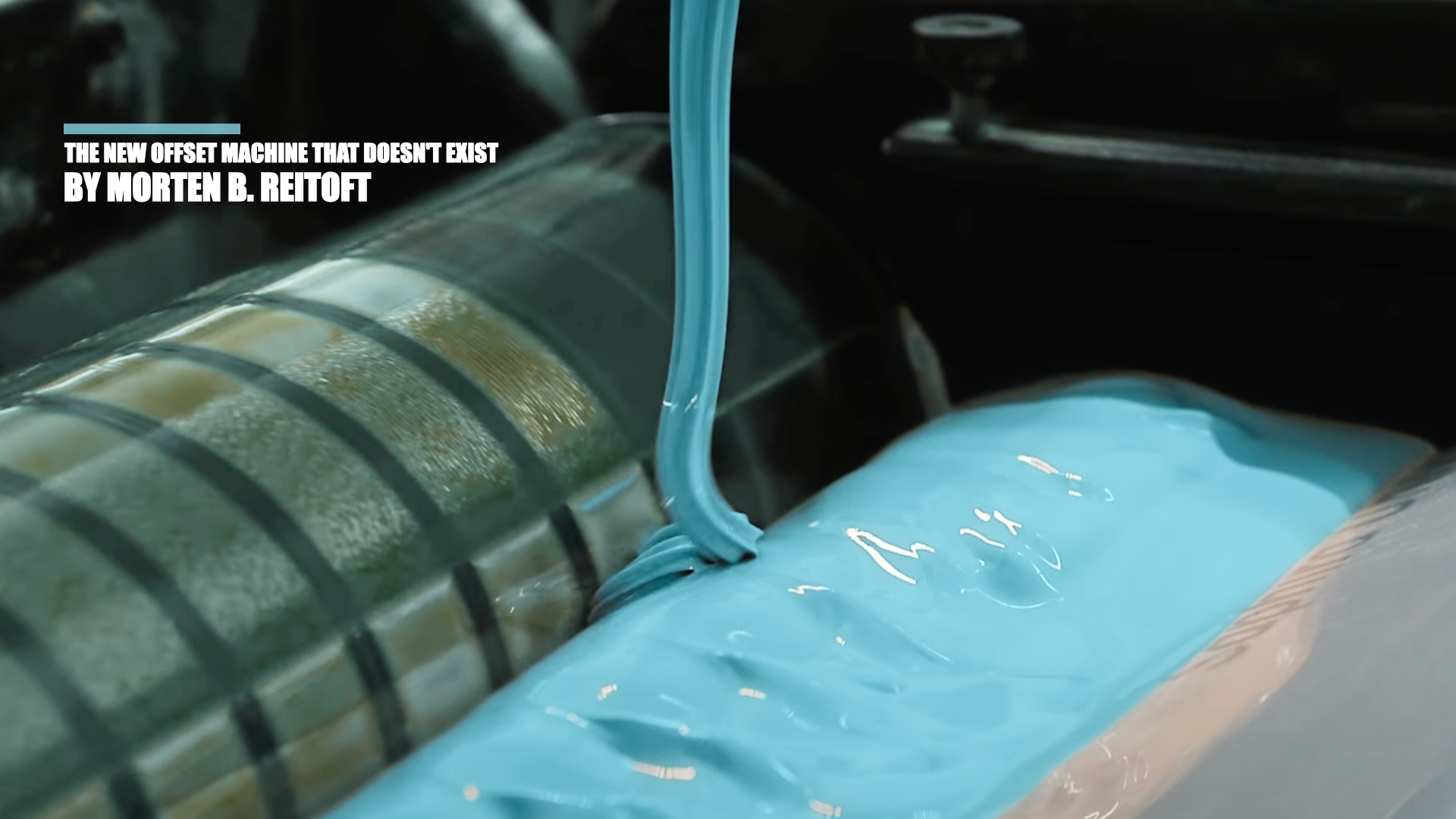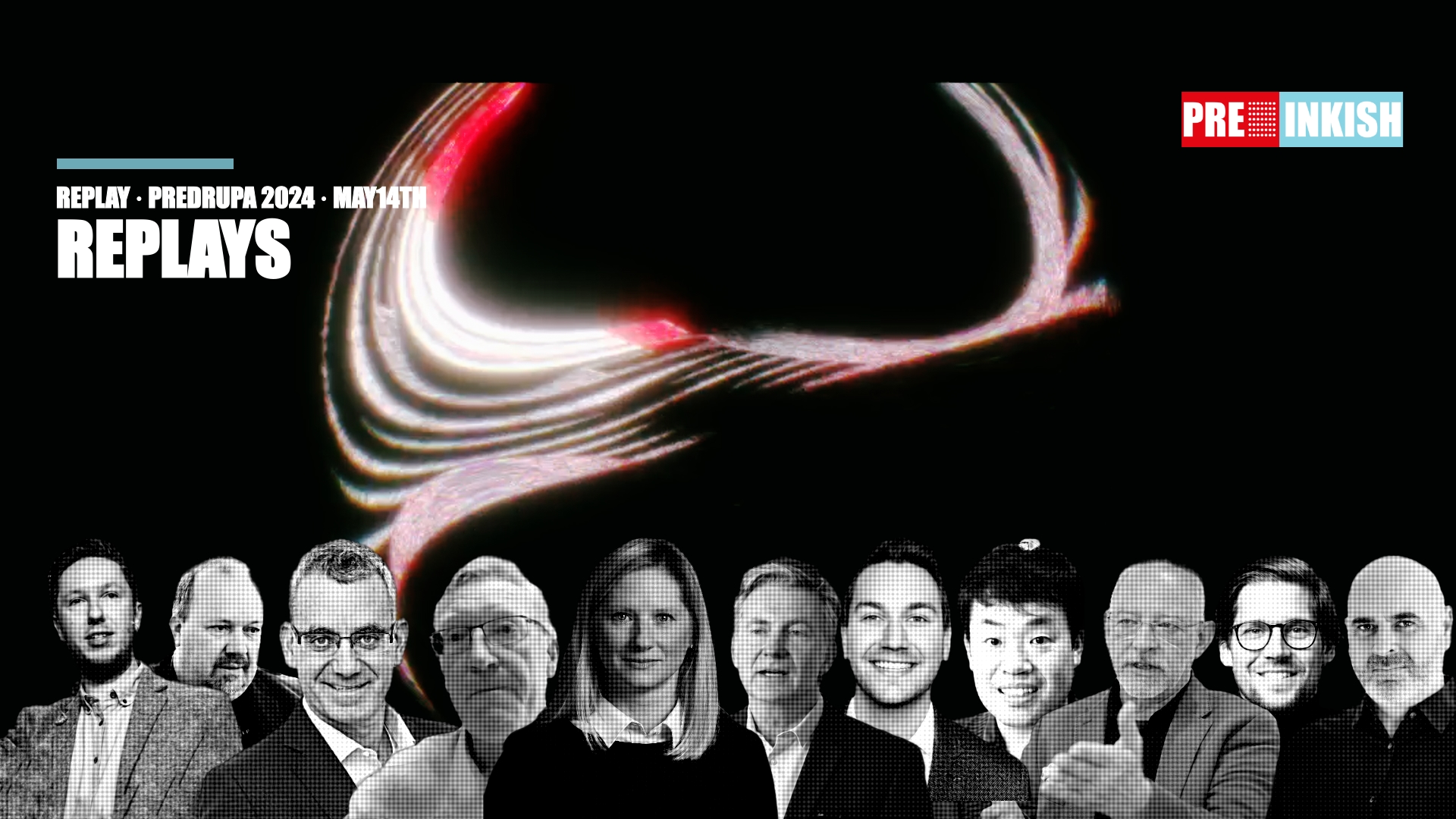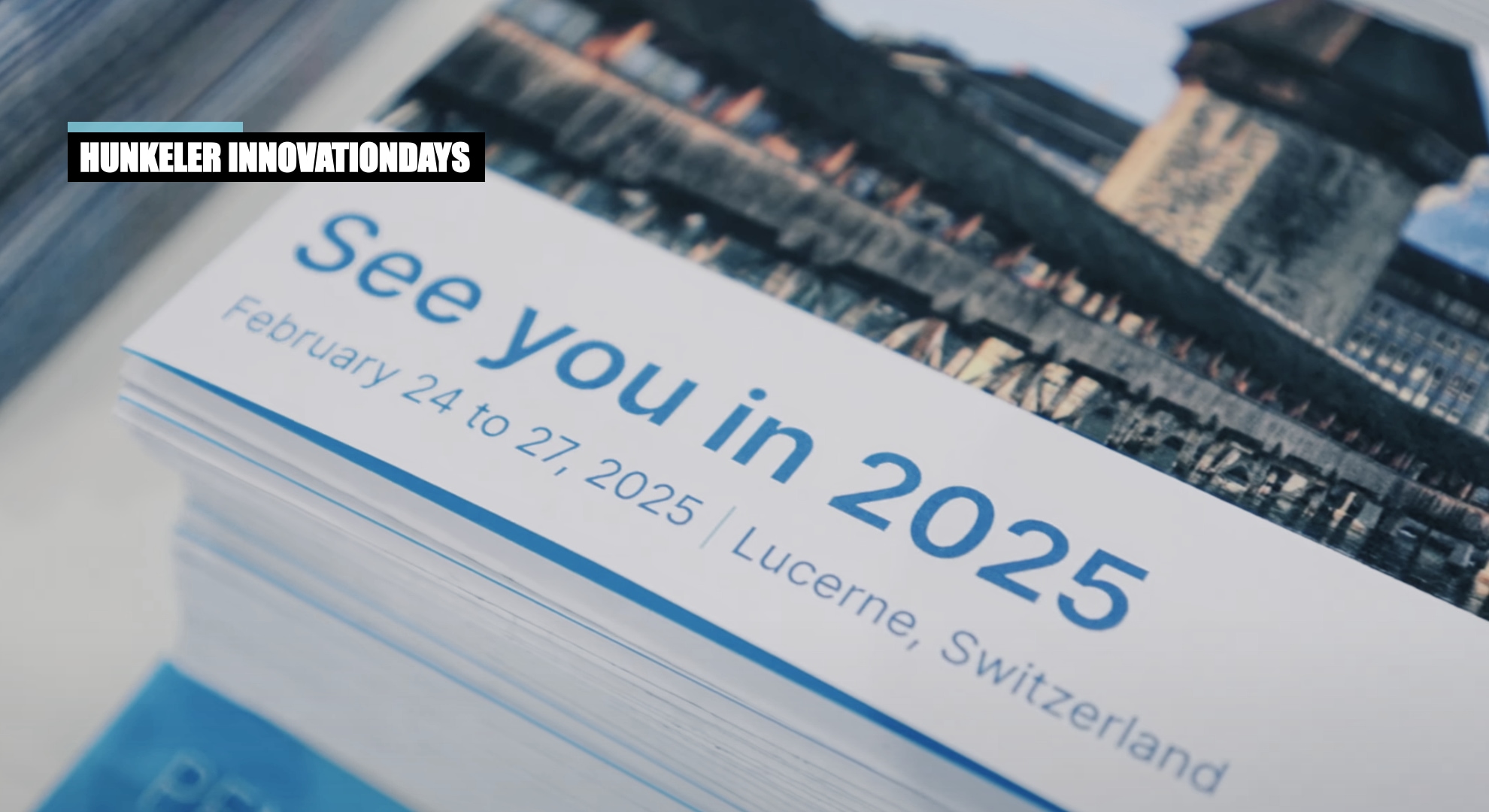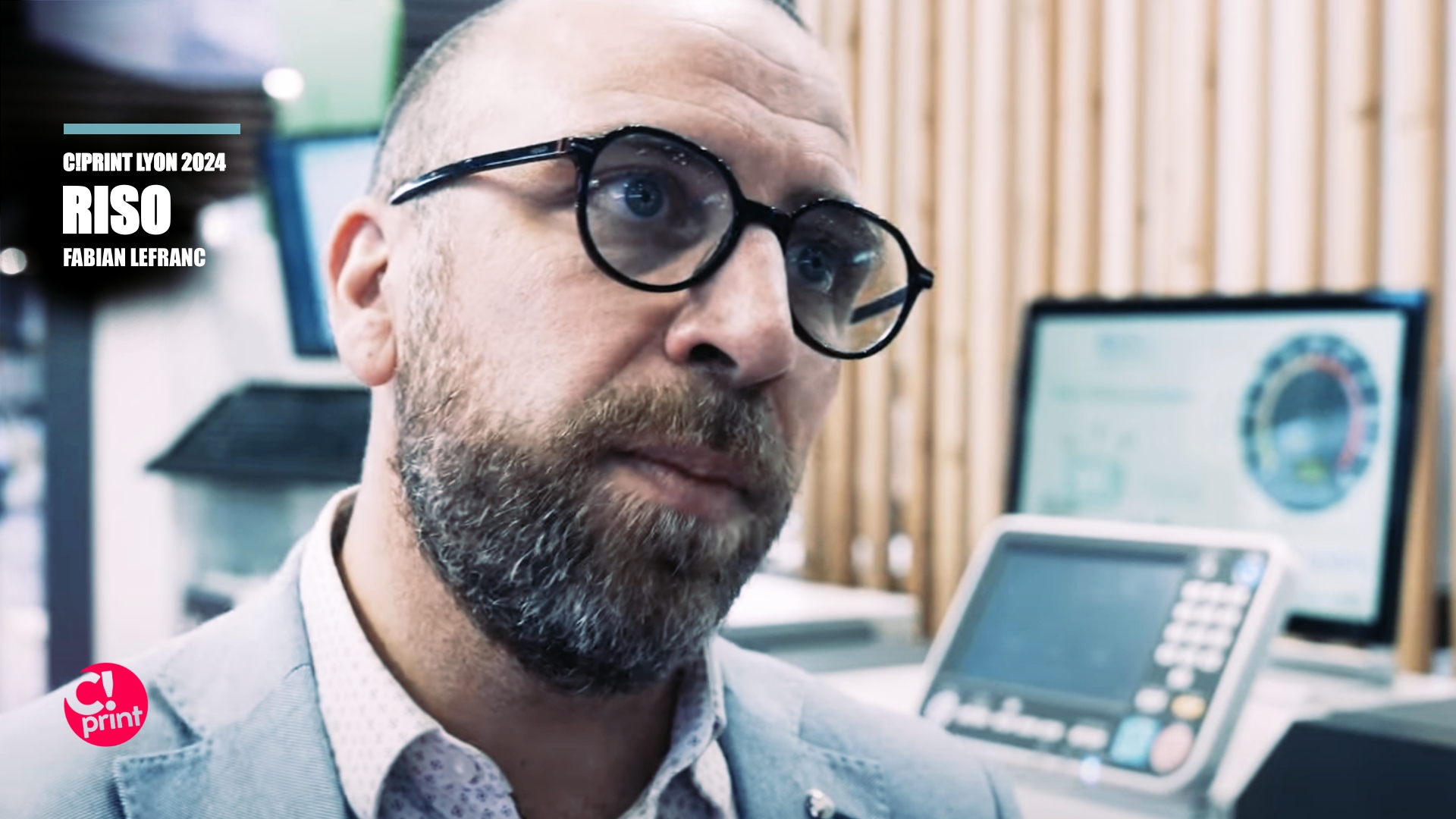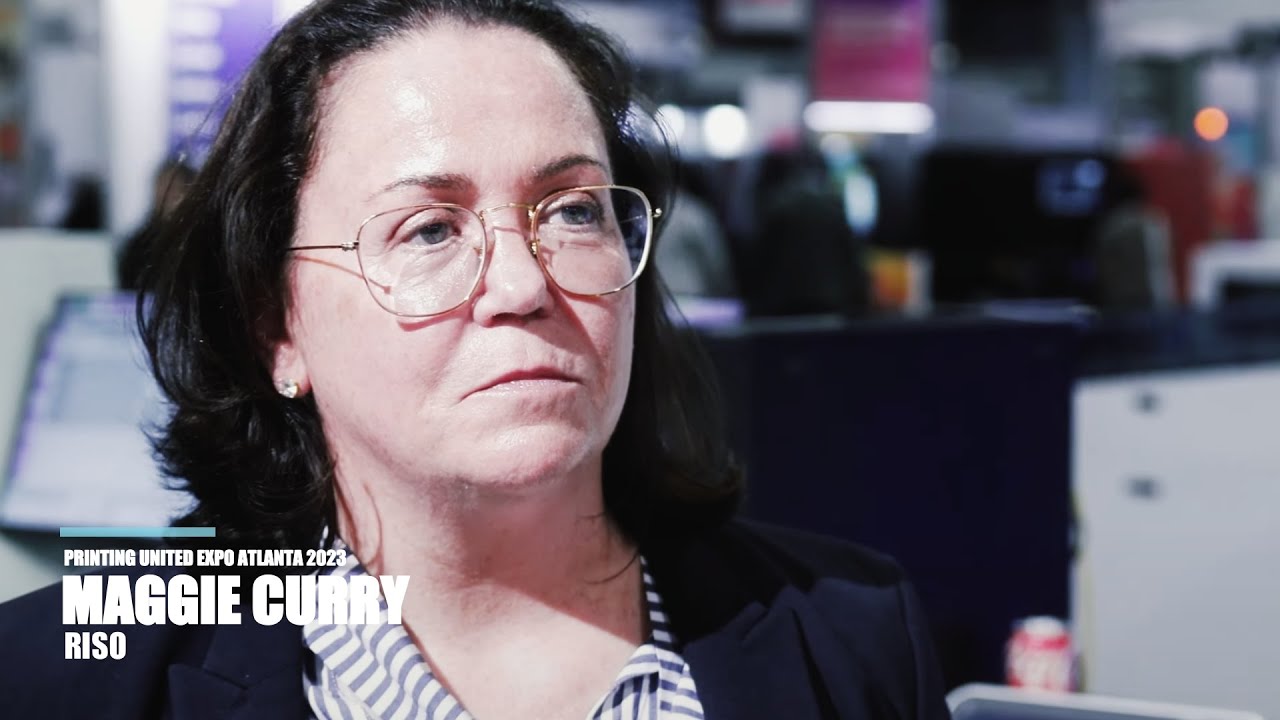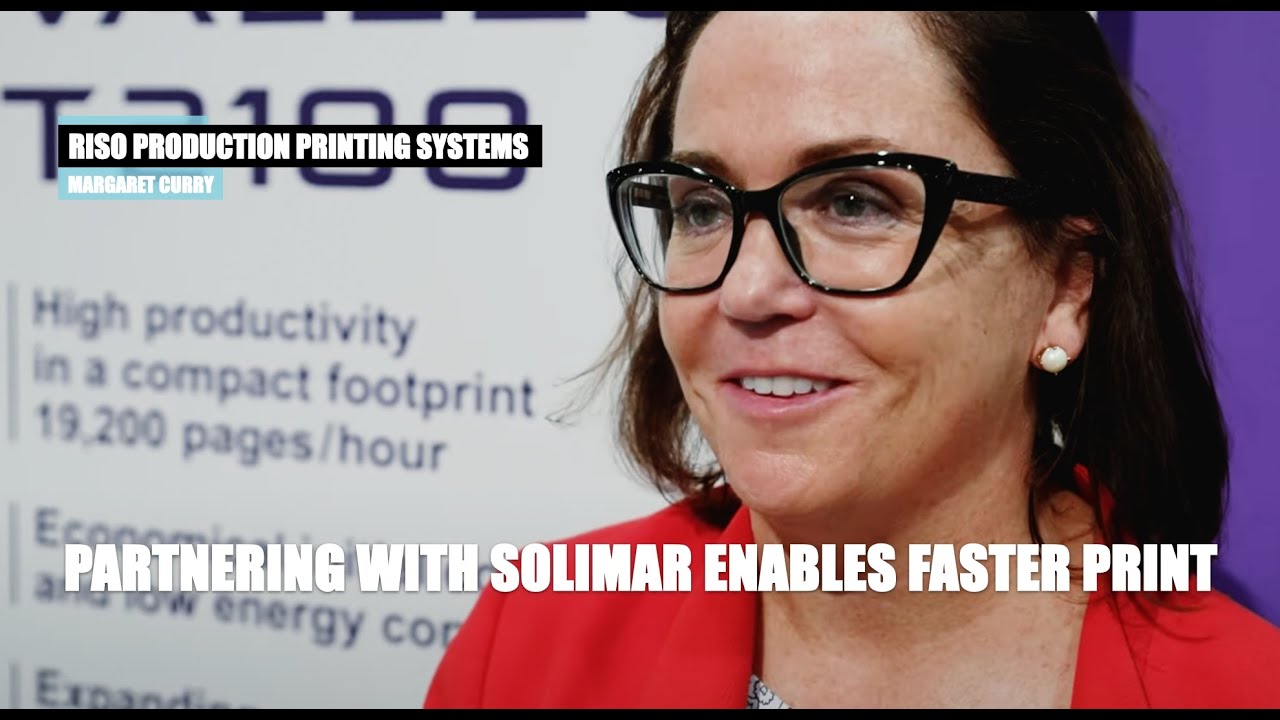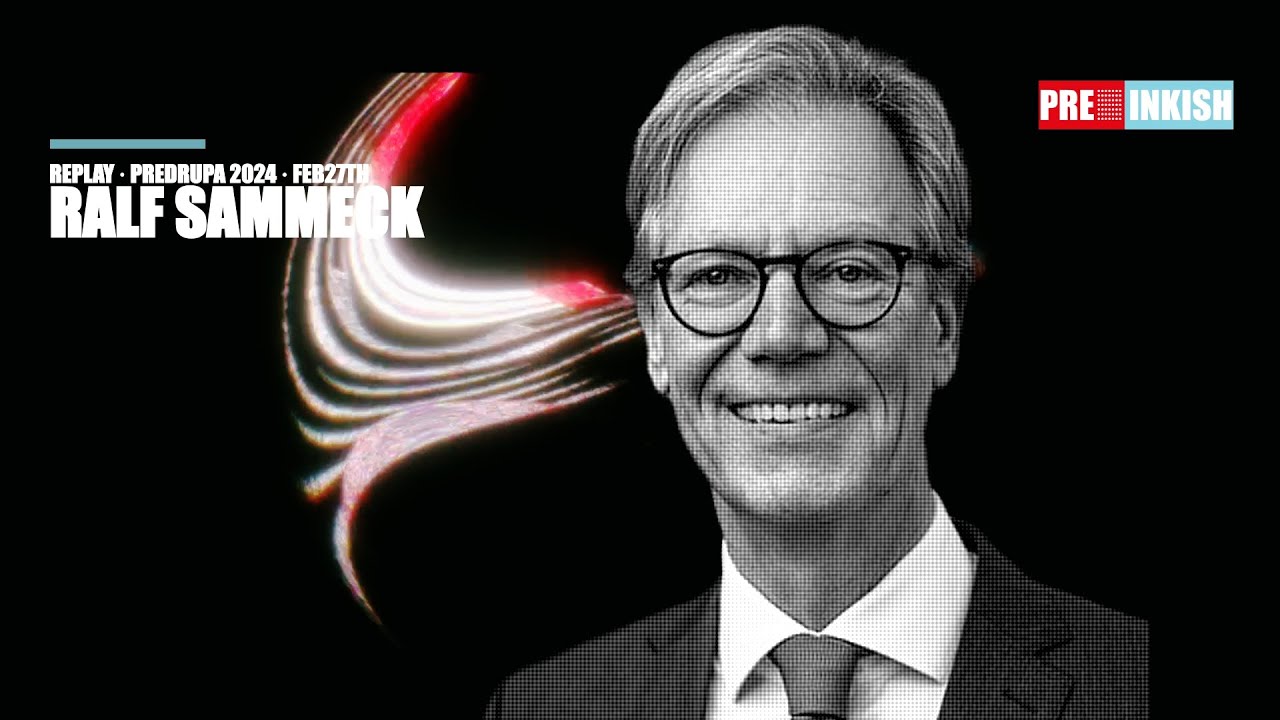RISO Got Inkjet In It’s DNA · Andre D’Urbano · Director dealer sales & Corp. Marketing · RISO, USA
PRINTING United must have been a good show for RISO. At the show they presented the new RISO Valezus – to understand what the name actually stands for, you’ll have to watch the film. However, we can reveal that Valezus is a 320 pages per minute full-colour inkjet printer. At the show, RISO sold quite a few machines and seemed very satisfied with everything. RISO is a Japanese vendor and has for many years been a leader in cut-sheet inkjet print – you can argue that inkjet is part of RISO’s DNA. Enjoy the interview with André D’Urbano.
This is a Morten from Inkish.TV and we are still live from Printing United in Dallas and we are here on the third day. Did you see Print Sample TV right now? It was just amazing, wasn’t it?
Now we are just about to hear something that is almost as impressive as some good print samples. We’re talking to Andre from RISO. Andre, tell me a little bit who are you?
RISO is an organization. Myself, I’m Andre D’Urbano. I’m the director of marketing here at RISO. RISO is an organization that, for many years, has been working with artists and the print industry, as well as the education industry. We have many schools today who use RISO and the reason is RISO is an ink-based technology.
You have been there from the very beginning almost.
We’ve been there from the very beginning. We’ve been inked since day one. The beauty of ink is we use no heat, so the paper is flat and ink, of course, is always so much more affordable.
One of the things I have always enjoyed when I’ve been visiting RISO booth is that, even 10 years ago, your machines were just so fast.
They continue to be fast, well said, and a large reason for that is the fact that we do not use heat. So if you can eliminate the heat, you eliminate many technical issues and you can permit yourself to operate the technology at a much higher speed.
When you are able to deliver technology where you don’t have to use heat, does it mean that you have developed special ink things or other driving mechanisms? How does it work?
Well, that is an excellent question. So it’s all about the ink, the ink itself that RISO manufactures. RISO has been manufacturing that ink for many years and it is an oil-based ink. So we use no heating element, no drying element. An oil-based ink is applied to the paper and is instantly dry and so that makes for a very nice process.
With an oil-based ink technology, you’re also able to deliver a high and consistent output.
Very good, and that is exactly what RISO will do. There is no fluctuation in quality. Whether you are printing the very first copy or copy number 10,000, it will look exactly the same. That is a big advantage of ink and having no heat.
Also one of the things that always reminds me about when I talk about RISO is that you’re a Japanese manufacturing company, as far as I remember. One of the things that I honestly like a lot about your things is that the capital costs of your equipment and the operational costs is extremely competitive.
That is exactly correct where RISO is concerned, the capital cost of the equipment. The technology itself is still a production device. It is capable of doing 9,800 impressions per hour. Some of our units will go up to almost 20,000 impressions per hour, so they’re very fast. And, again, because there’s no heat, there’s very little electricity used, so it is extremely environmentally-friendly.
There’s a wonderful green story connected to the RISO technology. But, as a result of the technology having no heat, there’s much less parts usage and so the equipment itself is very affordable. It is much less than typical production equipment. As well, the actual printed copy, it’s ink, so you’re looking here in America it’s about one penny per page, so it is very affordable to print color.
So when you say penny, have you changed currency since the last time I was here?
Not quite, no. We’re talking about 1 cent, right, 1 cent per page.
I just had to ask-
Sure.
… because we have to have a little fun as well, right?
Of course.
It doesn’t have to be too serious, right?
Here at Printing United, did you send some new technology?
We did send some new technology. Actually, it’s right behind me. That technology is the VALEZUS T2100. This is our latest entry-
I have to interrupt you. How do you find these brilliant names?
Well, our parent company in Japan, RISO Kagaku Corporation, has an extensive marketing department. They, from what I understand, sat down and looked at many different names and arrived at the name VALEZUS, which has a very unique meaning, actually. When you look at the name VALEZUS, V-A-L means value, the E-Z part means easy to use and, of course, U-S is use, VALEZUS.
That’s a great name, actually, right?
Yes.
Yeah. I’m sorry I was interrupting you. Tell me a little bit more of that machine.
Well, so that device is a very powerful device. This is a technology that will print at a speed of 320 pages per minute. It is still an ink-based device, full color.
It is a technology that will find itself in many high-volume print environments. We’re talking about customers that are printing transactional documents, a lot of statements, your Visa statement, your MasterCard, your banking statements, your cellphone bill, that type of item.
As well, you will find it in many school printshops, university, college, hospital where there’s many books and printed material to be printed. This is where that unit will find itself.
When I look at it, from here at least, it looks a little bit bigger than, for example, the other one that you have here.
It is because it is two RISOs put together.
So they have like a duplex machine, a duplex capability? Why is it two units?
So what happens is we put the two units together and in between is a perfecting device, which will flip the paper and so the device itself, the RISO is not duplexing the paper. It is the perfector unit that is flipping the paper and, as a result, it’s much faster.
I guess that you also have more control on registration.
We do. It’s a lot better control on registration. RISO registration is good to begin with. This one makes it that much more better.
I guess that since you’re not using heat, registrations is also less of a problem because the mechanical… I guess every vendor has that under control. It’s more like the shrinking of paper when you have heat to it, right?
That is correct. Very well said, again. The fact that we use no heat, the paper remains. It retains its integrity, it comes off flat. So for anybody who’s in the business of folding and inserting that paper into envelopes, for example, it is wonderful to work with paper that has not been treated with heat.
I guess that you are really excited about this new machine. So what is the future for this device in this market?
Well, we introduced the technology here at Printing United in 2019. It will be a big part of Drupa in about nine months or so in Germany.
We sold our first unit here at the show today, so it’s been very exciting. This actual event has been a very great event for us. We sold about 26 RISO printers to 26 different customers, so they’re excited.
Twenty six new customers on a trade show.
Twenty six new customers in three days, yes.
You know what, inkjet has changed. People are coming into our booth. They have done their homework, they have Googled what is inkjet, where it fits in my operation. They see RISO as a great entry point into inkjet. It’s an affordable investment and they’ve just come to our booth and said, “Show me the product. Where do I sign?”
Perfect. Thank you very much for talking to me.
Thank you.
Okay.
This has been a pleasure.
For me, too. Thank you.

































